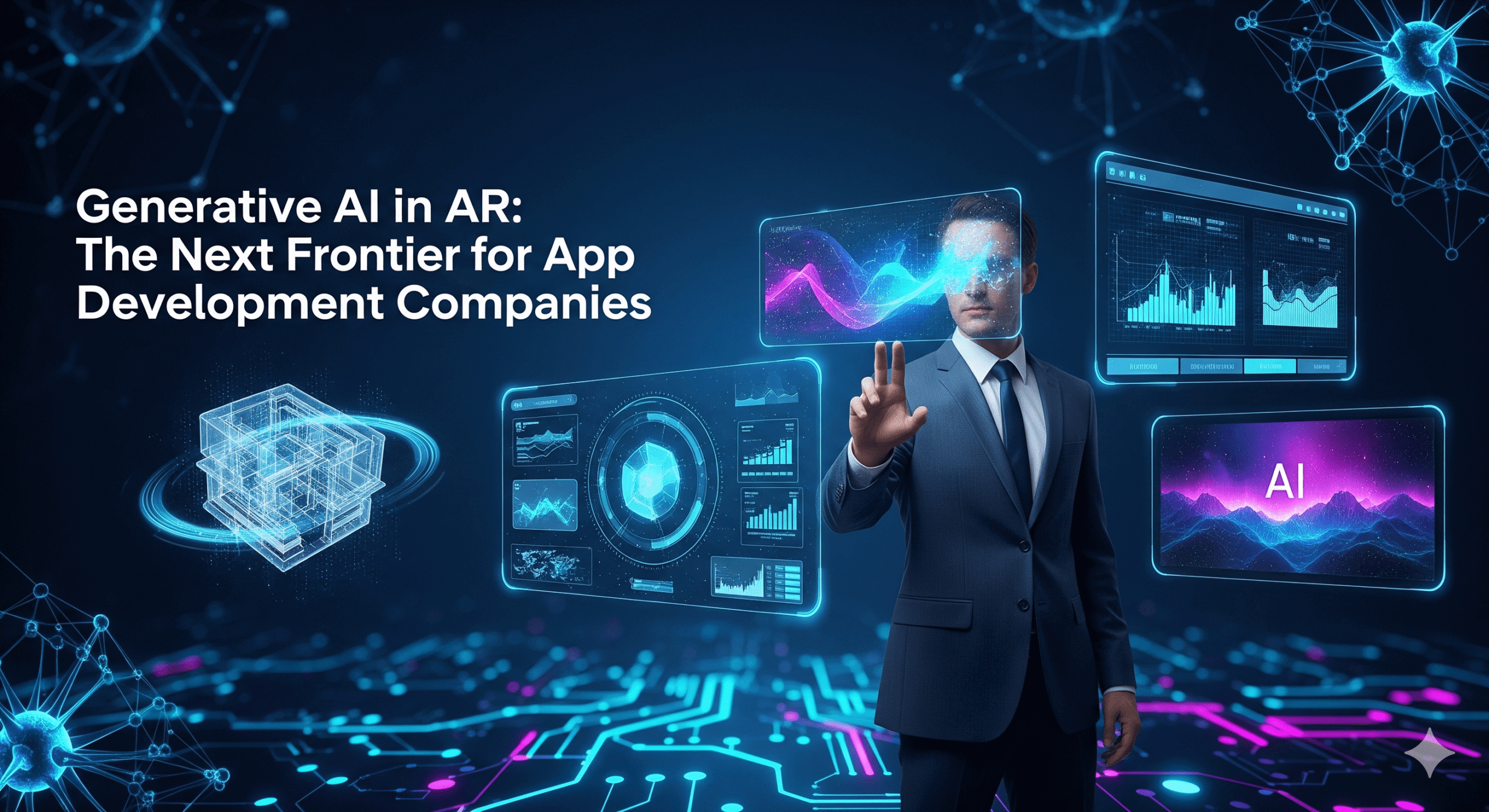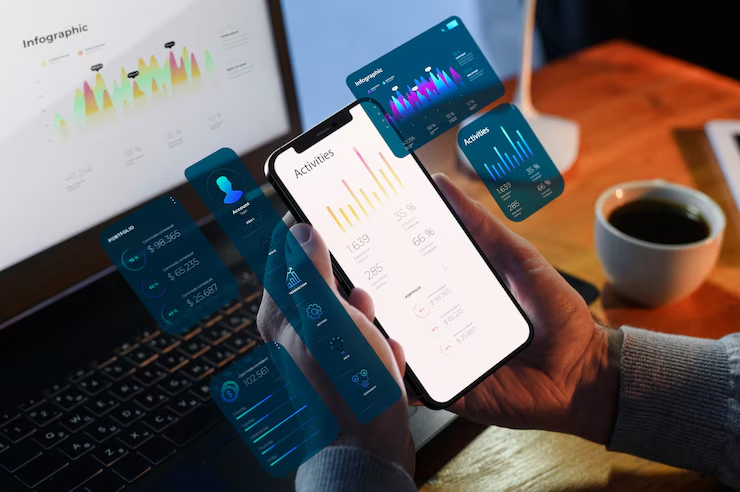
The mobile app ecosystem is entering an era where augmented reality (AR) and generative AI are no longer buzzwords but transformative technologies. While AR creates immersive, real-world overlays, generative AI introduces the ability to generate new content, assets, and interactions on the fly. Together, they are reshaping how users engage with digital products and services.
For businesses aiming to build immersive, intelligent, and future-proof applications, partnering with an experienced AR App Development Company is becoming critical. At the same time, expertise in generative AI development ensures these apps are not only interactive but also dynamic and personalized.
This blog explores how AR and generative AI are converging, the opportunities for businesses, practical applications across industries, benefits of adoption, and why app development companies are investing in this frontier.
The Convergence of AR and Generative AI
Augmented Reality (AR) enhances real-world environments with digital overlays, allowing users to interact with data, 3D objects, and experiences in real time. Generative AI, on the other hand, creates new content—text, images, audio, 3D models, or even code—based on learned patterns.
When combined, these two technologies can:
-
Generate immersive 3D content instantly (e.g., virtual furniture for an interior design app).
-
Personalize AR experiences by adapting environments to user preferences.
-
Enable real-time co-creation where users interact with AR scenes generated on demand.
This fusion marks the next frontier of app development—an evolution from static AR experiences to living, generative environments.
Why App Development Companies Are Embracing This Frontier
An AR App Development Company that integrates generative AI development capabilities can deliver:
-
Dynamic user experiences instead of pre-programmed interactions.
-
Faster prototyping with AI-generated assets.
-
Scalability since AI can automate content creation.
-
Competitive differentiation by offering next-gen features.
As businesses demand smarter, adaptive applications, development firms that combine AR with generative AI stand to lead the market.
Key Applications of Generative AI in AR
1. Retail & E-commerce
Imagine walking into a store with your phone camera open:
-
Generative AI instantly designs virtual outfits based on your body measurements.
-
AR overlays allow you to “try on” clothing or accessories in real time.
-
AI-powered recommendations adapt as you move through the store.
For retailers, this creates personalized shopping journeys, boosting engagement and conversions.
2. Education & Training
-
Generative AI creates interactive 3D models for AR learning apps—like anatomy models that adapt to a student’s progress.
-
AR simulations for workplace training can generate realistic practice scenarios on demand.
This combination makes learning immersive, personalized, and scalable.
3. Healthcare
-
Surgeons can train in AR environments with AI-generated patient models.
-
Generative AI can simulate rare conditions, offering doctors exposure to diverse medical scenarios.
-
Patients may use AR + AI apps for rehabilitation with dynamically generated exercises.
4. Gaming & Entertainment
This is perhaps the most exciting space:
-
Games can generate infinite environments and characters in real time.
-
AR players can interact with evolving storylines shaped by AI.
-
Entertainment apps can offer personalized AR concerts or shows where AI generates content based on user preferences.
5. Architecture & Real Estate
-
AR overlays let buyers see homes before construction.
-
Generative AI creates multiple design variations instantly, tailored to client needs.
-
Developers save time and provide a customized, immersive buying experience.
Benefits of Generative AI in AR App Development
When an AR App Development Company integrates generative AI development, businesses gain several advantages:
-
Hyper-Personalization
Every AR experience adapts to user behavior, preferences, and context. -
Cost Efficiency
Generative AI reduces the need for manual asset creation, lowering development costs. -
Faster Time-to-Market
AI-generated assets and environments accelerate prototyping and deployment. -
Content Scalability
Apps can generate infinite variations of environments, characters, or products. -
Increased Engagement
Users stay longer in apps when experiences are dynamic, immersive, and relevant.
Key Technologies Powering AR + Generative AI
-
Machine Learning Models – To recognize environments and generate adaptive content.
-
Generative Adversarial Networks (GANs) – For creating realistic 3D objects and textures.
-
Natural Language Processing (NLP) – Allowing users to interact with AR apps using voice or text prompts.
-
3D Generative Models – Such as Neural Radiance Fields (NeRF) for producing lifelike 3D environments.
-
Edge AI + AR SDKs – For real-time performance on mobile devices.
By combining these tools, an AR App Development Company can craft apps that feel fluid, intelligent, and responsive.
Challenges in Combining Generative AI with AR
While the potential is vast, companies face challenges:
-
Performance Constraints – AR and AI both require high processing power.
-
Data Privacy – AI systems must protect sensitive user data.
-
Accuracy – Generative AI can sometimes produce irrelevant or low-quality content.
-
Hardware Limitations – Not all smartphones or AR glasses support advanced features.
Forward-thinking companies are addressing these issues with optimization, cloud processing, and lightweight AI models.
Why Businesses Should Partner with AR App Development Companies
To succeed in this emerging space, businesses need both AR expertise and generative AI development knowledge. Partnering with an experienced AR App Development Company ensures:
-
Access to developers skilled in AR SDKs, Unity, Unreal Engine, and AI frameworks.
-
Strategic guidance on integrating AI features seamlessly.
-
End-to-end support from ideation to deployment and scaling.
-
Competitive advantage with innovative, future-ready apps.
The Future of AR and Generative AI
Looking ahead, AR and generative AI will unlock possibilities such as:
-
AI-driven AR assistants that guide users through real-world tasks.
-
Dynamic advertising where generative AI creates personalized AR ads in real time.
-
Collaborative AR spaces where multiple users co-create AI-generated environments.
-
Generative AI-powered AR wearables that merge physical and digital realities seamlessly.
By 2030, the line between real and digital will blur further, and companies combining AR with generative AI will set the gold standard for immersive technology.
Conclusion
The convergence of generative AI and AR is not just a technological advancement—it’s a paradigm shift in user experiences. From e-commerce and healthcare to gaming and real estate, the opportunities are endless.
For businesses, the key is to collaborate with an experienced AR App Development Company that also specializes in generative AI development. Together, these capabilities can create apps that are immersive, intelligent, and endlessly adaptive.
The next frontier of app development has arrived, and it belongs to those who embrace the fusion of AR and generative AI today.








